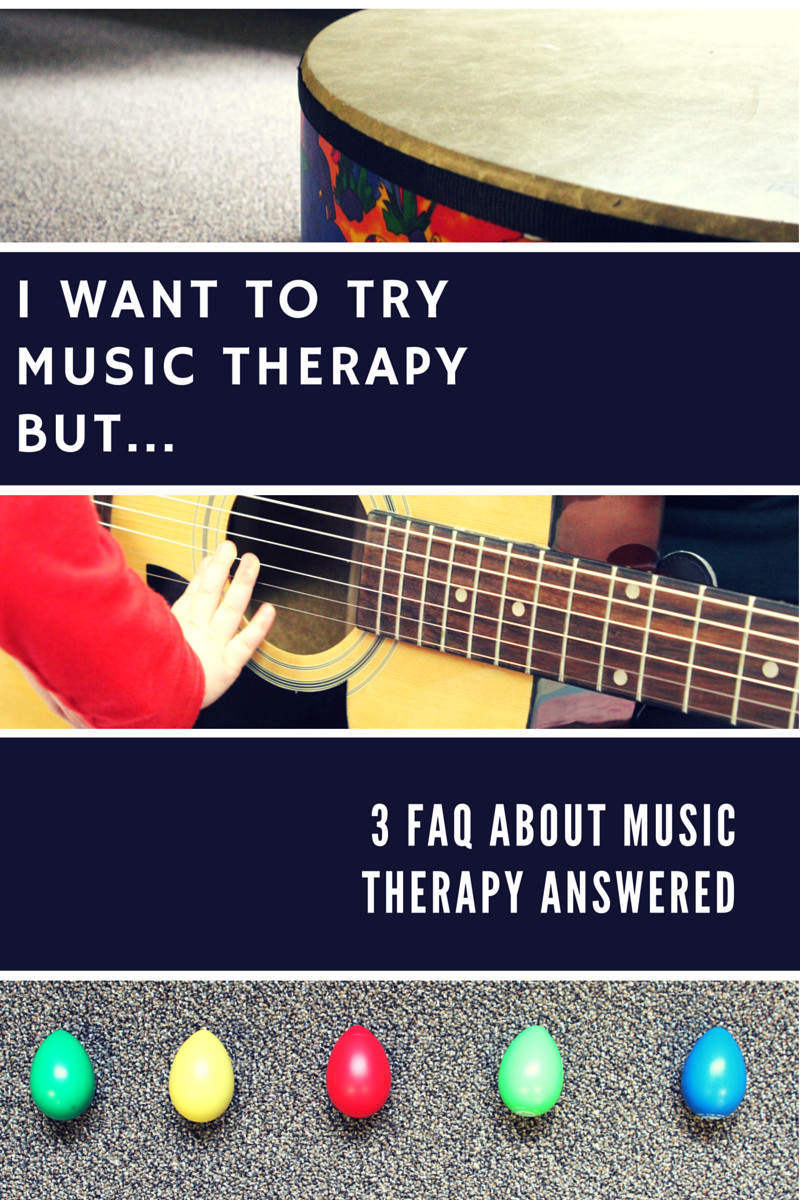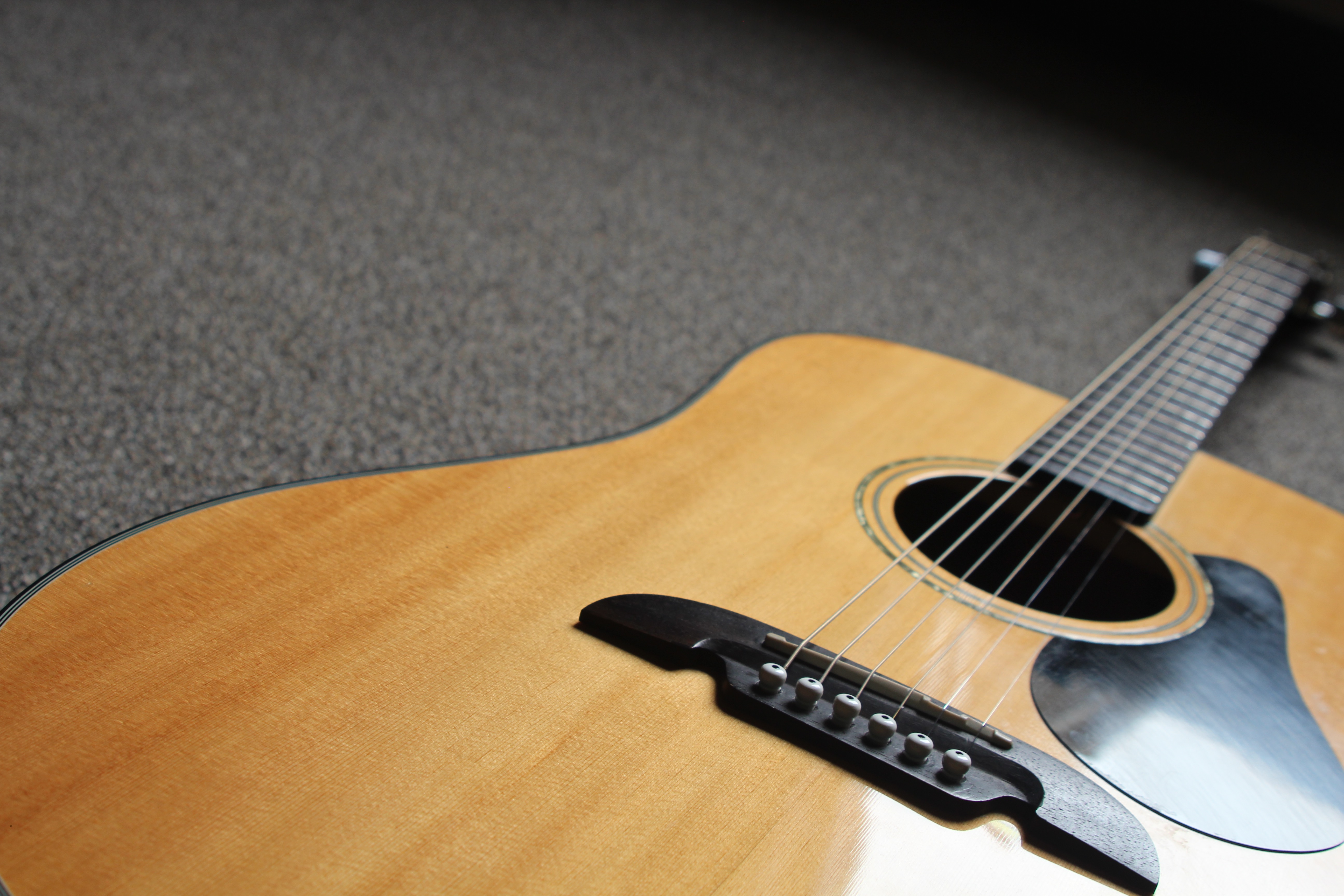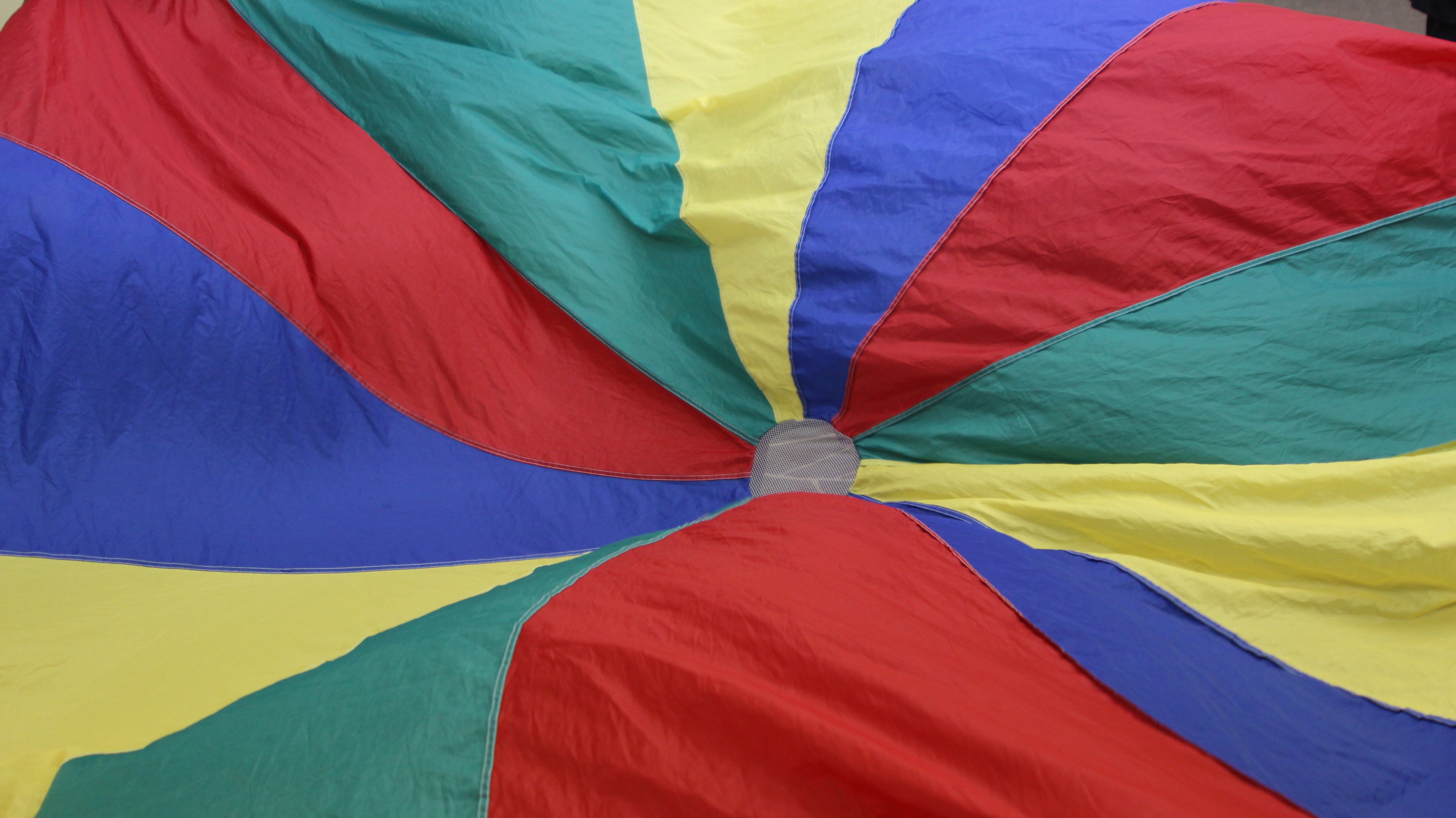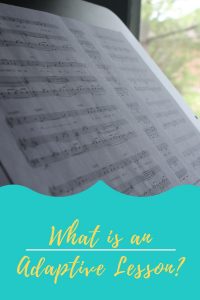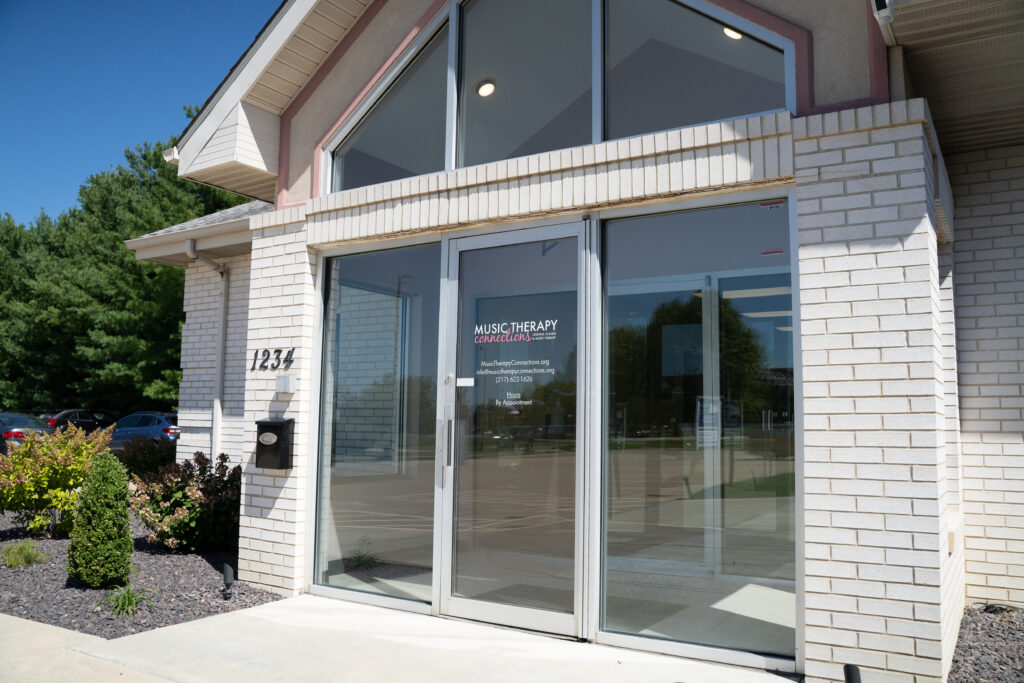by Sammy | Aug 5, 2016 | Intern's Corner, MTC

Hello everyone! My name is Sammy Springer and I am the new intern at Music Therapy Connections. As everyone knows, Alisabeth was the previous intern and is now currently a music therapist at Music Therapy Connections! I will be carrying out her tradition of writing blogs for the Intern’s Corner for the next six months. That being said, I thought I would share some information about me this week so you all could get to know me a little better.
I grew up in Middleton/Madison, Wisconsin and went to college to study music therapy at Western Michigan University in Kalamazoo, MI. My primary instrument is the flute and I have been playing since I was eight years old. However, I also love playing the guitar and the piano! Since my junior year of high school I knew music therapy was the right career path for me; it seems unbelievable that I just finished my first week of my internship, but nonetheless, here I am fulfilling my dreams!
My first week as an intern was a little overwhelming, but overall, exciting. I am so excited and ready to learn everything that I can during the next six months! During this week, I mainly observed sessions where I was able to learn a lot about songwriting, assessments, self-care, and different therapeutic processes.
Here are just some of the things that I learned this week that might be useful to students and other new interns:
- Take a journal with you everywhere.
My internship directors recommended this to me this week and I found it to be extremely helpful. Just this week I filled pages with observation notes, lyric ideas, and lists of everything that I either needed to do or remember. Also, journaling or even taking notes during sessions throughout the day is a wonderful way to go back and reflect at the end of the day. It’s an important part of the learning process to reflect on everything!
- Writing original songs is not that scary!
Writing your own songs is important because you can write a song that can be tailored to each individual and their specific goals/objectives. Writing original songs and becoming comfortable sharing them is a goal of mine. It may seem taunting at first, but it really isn’t that bad! I encourage everyone, especially students and new interns, to try writing their own songs and sharing them. I wrote one this week and had to share it with my supervisors as well as the other music therapists, and I got through it just fine.
I am not sure how many times I have heard this throughout my lifetime, but it is just starting to click for me. Going to bed at a decent time, eating healthy, and taking time out for ourselves each day is extremely important. This week I started going to bed early every night and noticed a huge increase in my energy level. Although, I am not very good at practicing self-care right now, but it is something that I will concentrate on practicing for the rest of my life. If we don’t take care of ourselves, there is no way that we can help other people. I am excited to learn more self-care techniques and start practicing them!
Thanks for following me on my journey!
*Sammy Springer
by Katey Kratz | Jul 28, 2016 | MTC, Resources, Self Care
I cannot believe we are almost in August that we have a new intern starting on Tuesday!! My oh my, how time does fly. Both Rachel and I have had so much going on the past few months, on top of everything exciting happening at MTC, that we have felt a serious need to get back in touch with our mantra for this year: simplify, streamline, self-care.

We developed our mantra in late December of last year and have been actively working toward all three aspects. We’ve talked a lot about this mantra and ways we’ve been working toward those goals in several blog posts I’ve linked to below. Simplifying and Streamlining have been huge and exciting areas of focus and things we talk about almost daily as we continue to grow our team and expand our services. But with all of the hustle to achieve those goals, self-care has sometimes taken a back seat.
We value our team members, student, clients, and families and want to be our best for them every day. We also value our interns and understand that internship is a very stressful time and a huge transitional period from being a student to a practicing professional.
We want to lead by example. Putting focus on and implementing our own self-care routines helps us to be our best selves in all we do. It allows us to be more present, provide a positive example for those around us, stay balanced in work and in life, and simply be accountable. Self-care is a continual journey and something we really want to practice.
Rachel and I spent time on Tuesday talking about the importance of self-care and sharing some of the ways we practice self-care in our live Facebook video.
As we continue this self-care journey and as Sammy begins her internship, we’d love to hear some of the ways your practice self-care and what helps you to find balance in your daily life. Looking for other ideas to jump start your self-care journey? Check out the other blog posts we’ve written on this topic:
Three Words for 2016
Simplify, Streamline, Self-Care
The Intern’s Corner (Week 23)
http://www.onagoodnote.net/2016-simplify-streamline-selfcare/
http://www.onagoodnote.net/2016-simplify-streamline-self-care-part-2/
http://www.onagoodnote.net/2016-simplify-streamline-self-care-part-3/
http://www.onagoodnote.net/self-care-check-in/
http://www.onagoodnote.net/its-tuesday-and-im-exhausted/
by Alisabeth Hopper | Jul 27, 2016 | Class Registration, Parents, Services
So you have heard about Music Therapy online, through a friend, or even on Facebook and you are interested in services for you or a family member but you have a few questions first. We completely understand and we want to help you to determine if Music Therapy is right for you and your family!
Here it is, these are the three big concerns we hear when asking about Music Therapy services.
1. I can’t play an instrument!– This is a big one and I’m going to keep it short and sweet. A client does not need to understand music, or know how to play an instrument to be successful in Music Therapy! Between the three Music Therapists I have the opportunity of collaborating with I know that we have Music Therapists working with people from infancy to older adulthood. You need only to be open to a new experience and growth!
2. I don’t think I can afford it if insurance does not cover it. – Unfortunately, at this time there are not many Music Therapy practices in Illinois in which you can bill insurance for services. But don’t let that keep you from pursuing services! Our owners here at Music Therapy Connections are conscientious of the cost and purposely price our services at the cost of a co-pay. That’s right, you are paying the same rate as you would if you were billing insurance. It is important to us that those who need services have access to them.
3. I don’t know if Music Therapy can help me.– As Music Therapists we assess and treat goals which are academic, psychological, motor, speech, memory, and work with people who have diagnoses such as Autism, ADHD, Parkinson’s, Alzheimers, Depression, Anxiety, and the list goes on. The bottom line is that, if you’re interested go ahead and see a Music Therapist. Do an assessment and give it a try. You may just find a fantastic resource for you and your family!
Click here to learn more about Music Therapy for you and your family!
by Alisabeth Hopper | Jul 21, 2016 | Parents, Resources, Services

Put simply an adaptive lesson is a lesson where an adaptation is necessary for the student to thrive in their lesson environment. Typically, we think of adaptive lessons as being directed to students with disabilities and diagnoses. Yes, we have students of all ages and abilities, and when we say all we mean all!
That being said, there are many students who may benefit from adaptive lessons who do not have a diagnosis, or may not have a lifelong diagnosis. The easiest way to think about this would be if a student wanted to learn piano, but was recovering from a severe hand injury, we would adapt the material provided so that the student is progressing regardless of the inability to use their hand.
You may be wondering… but, can’t any music teacher do this? What makes your lessons different? Well, it is true that there are many fantastic teachers out there. Our approach is a bit different in that we place our adaptive lessons with our music therapists! Our board certified music therapists have studied how music affects our brain, bodies, and how to apply it to induce a positive change. We have training in diagnoses and have an understanding of counseling skills. We can apply our non-musical training to any lesson to better help that child to succeed regardless of any other limiting factors.
We all carry around labels, positive or negative that affect how others see us, and how we see ourselves. But at lessons our students are students. With or without a diagnosis we are there to help them achieve their goals. Period.

by Rachel | Jul 20, 2016 | Business Bits, MTC, Resources

This week on Facebook Live, Katey and I talked about how we communicate and collaborate with one another and as a team of 10 here at Music Therapy Connections. We shared 4 mobile apps that we rely on for these purposes, which I’m outlining below so that you have the direct links at your fingertips.
As we mentioned in the video, Katey and I have very limited time to powwow together in the studio, which is why these apps come in so incredibly handy. The essentials in our technology toolbox include:
- Google Docs – We use Google docs and spreadsheets to collaborate on meeting notes, schedules, and various spreadsheets. The coolest feature is that you can edit a Google doc at the same time and see each others’ changes happening right in front of your eyes.
- Dropbox – this is our go-to tool for sharing and working on files together. To make this process as streamlined as possible, we use the same programs, apps and templates (such as Pages for Mac) so that there are no formatting issues.
- Trello – We are in LOVE with this project management app, which allows us to organize projects, ideas, and checklists.
When it comes to communicating as a team, our #1 tool is Slack. Some of the features include:
- group channels to talk about certain topics with specific team members
- file sharing within a group
- direct messaging & group messaging
Slack works very similarly to texting, because it shows up on your mobile device as well as within the web app. But what sets it apart is that it is searchable — so convenient! Slack has greatly reduced the amount of email we send within our team.
What are YOUR favorite tools for communicating and keeping all of your collaborative projects organized?
by Katey Kratz | Jul 12, 2016 | MTC, Reflections, Resources, Tips & Tricks, Videos
Songwriting is a huge part of everything we do here at Music Therapy Connections. Wether we are writing new songs for our Listen & Learn for Little Ones Classes, composing original tunes for our individual clients, or encouraging our students to create their own compositions; songwriting is engrained in what we do.
Sometimes, the hardest part of songwriting is simply getting started. I remember sitting down to write some of my first songs as a new professional and feeling so self-conscious that I could barely put pen to paper. Even now, developing materials to suit the needs of my clients can sometimes seem like a daunting task. Overcoming that self-doubt and learning how to let it flow can be a tricky process, so Rachel and I took a little time today to talk about our favorite methods for getting past those songwriting blocks and challenges.
Below are ALL 9 tips in our Facebook Live video earlier today along with some extra ideas to get you started.
Morning Pages – In the book “The Artist’s Way” by Julia Cameron, the author describes the practice of morning pages: taking time every morning for free writing. Creating the practice of setting aside time and putting all of your thoughts on paper every morning without editing. This free flow of thoughts can be an excellent bridge to songwriting.
Topic Journaling – Pick a word or single topic to write 10 lines or sentences on. You do not have to write complete thoughts or sentences and can use any number of lines or sentences you choose. Selecting a single topic for free writing can be a helpful way to get started on song ideas. (BONUS: other methods I love using are word associations and mind mapping to get my creative juices flowing). The primary goal here is to open yourself up to ideas and just jot them down. Save the editing for later.
Going back to music you enjoy – Is there a song that makes you feel amazing? Are there songs you simply love? Go back and give them a listen. See if you can find out why you love them or what feels good. Use them as your inspiration. OR simply take time to enjoy music other people have created. Create a playlist for your life or put together a set of songs for how you are feeling. Spotify is a great resources for this adventure.
Enjoy Yourself – My best songs almost always come from positive experiences in other parts of my life. Go do something you love and enjoy your life. Keep your voice recorder handy though because you never know when that inspiration will strike.

This little app is my best friend.
Think of Songwriting as a Conversation – Talk with someone about your songwriting or say your lyrics out loud like you are talking to someone. Sometimes, even just talking through why you are struggling will help you get over that hump.
Go for a Walk – Get outside. Get some fresh air. Clear your mind. Walk away for a minute and change your scenery.
Don’t Force It – If you start to get frustrated, put it all aside and come back later. Literally, walk away. Thinking about something else for a little while can be just the solution you are looking for. Sometimes, a good night’s sleep is also incredibly helpful.
Be Present – Clear both your physical and mental space of clutter and create the space to be present in songwriting and creating. This is your time to be in the moment and create.
Share Your Song – Share what you’ve written with someone. ANYONE. This can be a single client, a co-worker, your child, a friend, your significant other, a family member, or even your pet. Sharing your creation out loud with someone provides new perspective and a sense of accomplishment.
(bonus) Record your creation. The method could be a video, a simple voice recording, a full recording, etc. How you record does not matter. Capture what you have accomplished so you can listen later, remember what you’ve done, and visit your work in the future. Take a moment to listen and appreciate what you’ve created. Take pride in your accomplishment and give yourself some praise!
What are your favorite tips for starting the songwriting process? We’d love to hear from your and share your ideas with everyone!
by Rachel | Jun 30, 2016 | Materials & Supplies, MTC, Resources

Have we mentioned that we LOVE movement props? You may have noticed that if you’ve seen our photos, browsed our songs, or attended our groups and sessions. We’ve written countless songs specifically for our FAVORITE movement props from none other than Bear Paw Creek, and we were recently inspired to compile 12 of those songs into a songbook.
The songbook is made up of 4 sections, one for each of the different movement props — bean bags, stretchy bands, balloon balls, and scarves — for which the songs were written. We made a video earlier this week to share details about those props, which you can watch right here.
Not only do you receive the lyrics and chords for each song, but we are also including the recordings and a leader’s guide with tips and instructions for implementing the songs right away.
But here’s the most exciting part of this new release: now through Tuesday, July 5, not only will you receive Songs for Movement Props, but you’ll also get our multimedia songbook Counting Through the Seasons ($17 value) AND be automatically entered to win our giveaway of ALL the movement props listed above from Bear Paw Creek. We’ll be announcing the winner and delivering both digital songbooks to those who have ordered on Tuesday.
We want to send a HUGE thank you to Janet Stephens, the owner of Bear Paw Creek, for not only being such an enthusiastic supporter of our work but also for so generously offering this giveaway. So many music therapists and educators use and benefit from her products, and we are proud to be among them!
Okay, so let’s recap: when you preorder Songs for Movement Props now through Tuesday for just $14, you’ll get a bonus songbook and have the chance to win an amazing set of Bear Paw Creek movement props. If you’re on the fence, make sure to watch our video where we talk in depth about the songbook, props and awesome giveaway.

by Katey Kratz | Jun 24, 2016 | Class Registration, Parents, Services
Next week we have a very special mini-camp happening!!
I am so excited to have the opportunity to share my love of music and playing hand drums during the 3 DAYS of drumming camp!

This isn’t your typical drum-set style drumming! No drumsticks or experience needed! The group is open to people of all abilities and levels of musical experience. Whether you are looking to just have fun, learn something new, or add to your current skills, we would love to have you join the group! Over the 3 days, group members will:
- explore different kinds of drums
- play rhythm instruments from around the world
- learn basic hand drumming techniques
- become familiar with simple rhythmic patterns
- play instruments in a group
- learn a few ways to lead a drum circle
- improvise on a variety of percusion instruments
- and build confidence
Not only is hand drumming and participating in a drum circle a fun experience, it’s also a great way to make new friends, build relationships, work on focused attention and listening, learn new skills, relax, and more. The hour-long group will be from 6:30 – 7:30 pm June 28th, 29th, and 30th. I hope to see lots of new and familiar faces!
by Alisabeth Hopper | Jun 14, 2016 | Materials & Supplies, MTC, Tips & Tricks

I love exploring music with my clients, but being musical doesn’t always have to mean holding an instrument or tapping a drum. By bringing in different manipulatives, even non-musical ones, we can utilize three dimensional visuals, attend to sensory needs, and even save a few dollars. Which, let’s face it, is always a plus!
Stuffed animals are fantastic for working on counting, animal identification, and motor skills. Whether it be “Ten Little Monkeys Jumping On The Drum”, or “Down on Grandpa’s Farm” stuffed animals can be used to facilitate academic topics while utilizing fine and gross motor skills.
What I love most about stuffed animals as manipulatives is that they cater to sensory needs. They incline a client to squeeze them, push and pull them, and self-monitor their sensory needs. When I know that a client has additional sensory needs I like to give them ideal options and ways to fulfill those needs, and self-monitor those needs all while addressing the goal area and specific objectives. I like to bring multiple textures, densities, and overall options as possible. Its all about choice, and seeing when the sensory options are a comfort versus a distraction.
Stuffed animals are just one of the many ways that we can think outside the box to provide a broad encompassing care for our clients and students. They are easily accessible and available in a variety of textures, colors, and characters. I would consider stuffed animals one of my must haves in my music therapy materials kit! What about you? How do you think out of the box for your students and clients?
by Katey Kratz | Jun 4, 2016 | About Listen & Learn for Leaders, Materials & Supplies, MTC, Resources
Last fall, we began increasing the number of early childhood classes we offer. We split the classes into age groups but also offer groups with mixed ages. Though we use the same curriculum across all of the classes in one session, you will find that every group is just a little different. Each class has it’s own unique mix of participants that make it a little different from any other group even if other groups have the same ages, genders, etc.

This means ADAPTING and often on the fly. I, personally, teach both our Wednesday and Thursday night classes. Though I use the same materials for both classes, the presentation looks a little different each night. My Wednesday night class tends to be a little more active so I change the order of songs slightly, create additional verses for our movement songs, and ask more questions of group members. My Thursday night class is often more reserved and will sit for a long stretch of time. I use this to my advantage and take a longer time reading our book or singing our counting songs.
I LOVE all of the material we create and like to use them with my individual students and clients as well, adapting them even more as we go. Our newest book, “Counting Through the Seasons” was initially developed for our early childhood classes though all of our therapists have now adapted the songs to work on a variety of goals. In our newest “extra” going out to our VIP members and being added to the “Counting Through the Seasons” download, I describe 9 ways our seasonal counting songs can be adapted to work on goals aside from counting to five and how they can be changed to fit multiple seasons.
The price of the book (“Counting Through the Seasons”) will increase on Friday, June 10th.
Be sure to download your copy at a discounted price today!



